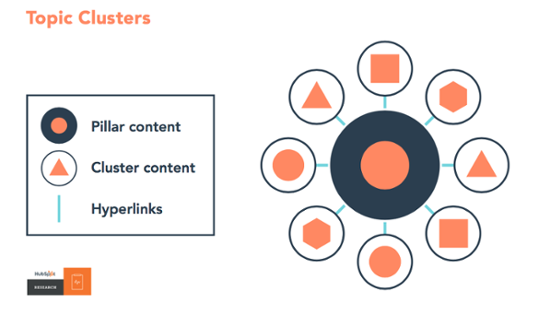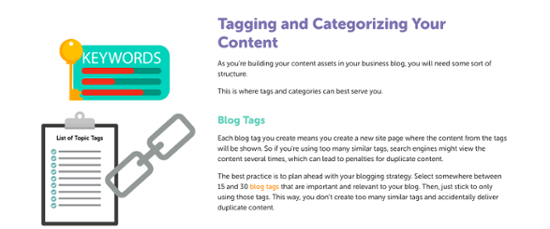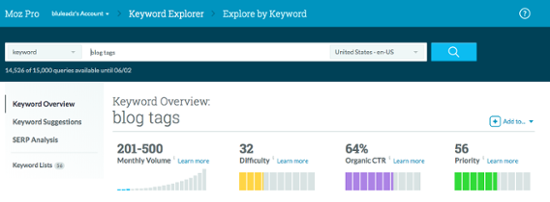Sometimes, brainstorming new content ideas for your business blog can be a drag.
After a while, you’re coming up with ideas you’ve already written, and although you can always historically optimize and republish those articles, you’re still in need of fresh ideas to share with your readers.
Searching for a blog idea generation hack? You’ve come to the right place.
In the past few months, we’ve written and published a handful of pillar content and even launched a new guides website page to neatly store them all. These long-form pieces of 10X content dive deep into one topic, covering everything you need to know about it from A to Z.
From each pillar page, we were able to generate over 20 new blog ideas. How?
Using topic clusters, of course.
What Is a Topic Cluster?
 Image via HubSpot
Image via HubSpot
A topic cluster is a collection of interlinked subtopic articles that all connect back to one core topic.
Yes, generally speaking, this term can be confusing.
But, HubSpot pretty much summed up the idea of topic clusters perfectly in one of their fairly recent videos. To them, topic clusters are:
An SEO strategy that focuses on topics as opposed to keywords.
There are three main components of a topic cluster:
- Pillar Page/10x Content: One main idea written into a long-form article or pillar page.
- Cluster Content/Subtopics: Shorter, more specific articles that discuss just one idea.
- Hyperlinks: Includes a link from the subtopic to the pillar page as well as a link from the pillar page to the subtopic.
Let’s put this into an example. You want to write a piece of 10X content on email marketing called “A Guide to Email Marketing.” This topic is very broad, so to break up your content into subtopics, you could focus on content revolving around various ideas:
- “How to Segment Contacts in an Email Campaign”
- “How to Write Email Subject Lines”
- “When to Send Emails to Contacts”
To properly link your subtopics to your core topic, ensure that the URL of your article “How to Segment Contacts in an Email Campaign” is hyperlinked in “A Guide to Email Marketing” and vice versa.
A tip for fellow HubSpotters: HubSpot has a pretty nifty tool that helps you set up a stellar topic cluster in a few simple steps. Learn how to use HubSpot's SEO tool here!
How Topic Clusters Boost SEO
 The power of search engine optimization (SEO) is really starting to take off, with search engines growing increasingly more intelligent and better optimizing search results for both user intent and keywords.
The power of search engine optimization (SEO) is really starting to take off, with search engines growing increasingly more intelligent and better optimizing search results for both user intent and keywords.
And here’s how topic clusters can benefit your business.
By tying all your smaller subtopics back to one main idea (with proper linking), you’re hinting to Google that these pieces of content are semantically related, thus giving them both a boost in SEO rank potential.
When one part of your topic cluster rises in rank, so does your whole topic cluster. They feed off each other’s success!
But, beyond SEO benefits, building out strong topic clusters can also improve user experience. When visitors start reading one of your long-form pieces of pillar content, they have immediate access to all the related content you’ve already written – content that goes more in-depth on a topic you touch on.
Benefits of topic clusters aside, we know why you’re here. You’re looking for a way to find new blog ideas based on the long-form content you’ve already written.
Don’t worry – here’s how we did it.
How We Did It: Discovering New Blog Ideas From One Pillar Page
1. Creating and Publishing a Pillar Page
A little while back, we felt the urge to start publishing pillar content on our website to provide more valuable, all-encompassing guides for our visitors, prospects, and customers. Over the course of a few months, we launched several pillar pages.
In these pillar pages, we sought out to dive deep into every aspect of one topic. For example, in our SEO pillar page, “The Content Marketer’s Ultimate Guide to Search Engine Optimization,” we covered all the essentials of building out a strong SEO strategy. These essentials were combined into seven different chapters:
- Why SEO Still Matters
- Where Content and SEO Meet
- Before You Start, Get SMART
- Choose Your SEO Hat
- Gather Your SEO Tools
- Prepare and Execute Your SEO Strategy
- Commit to Learning
2. Looking For Areas to Expand On
Once our pillar page content was up and live, it was time to start digging for new ideas.
To do this, we read through each chapter and discovered areas we thought we could build upon in a separate article. When looking through sections, we found words, phrases, and sentences that led us to ask one of the five W’s or H questions.
For example, in our How to Blog guide, we touch on using blog tags to organize your content, but we didn’t go into much detail.

Because of this, we decided that our blog could use a more targeted piece of content that discusses blog tags in more detail. And thus, “What Are Blog Tags? The All-Encompassing Guide You Always Wanted” was born.
When analyzing our pillar pages, we jotted down these generic ideas for later research. From this initial ideation period, we found about 40 to 50 ideas to study a little more.
3. Performing Keyword Research
With our initial ideas in mind, we began digging a little deeper to determine whether or not these ideas were worth writing about, based on keywords and user intent.
Since we wanted to find relevant topics based on what people were searching for, we used tools like Moz’s Keyword Explorer and Ahref’s Keywords Explorer to analyze the search volume and difficulty of each topic’s primary keyword.

Not every topic stuck from our initial search, and that’s ok. By jotting down every idea we had at the beginning then finding more high-ranking and targeted topics, we narrowed our ideas to better suit our buyer personas.
4. Building Out a Content Strategy
With these new blog ideas in mind, we created spreadsheets to flesh out the content and determine the direction we wanted to take the piece. We created working titles, developed short outlines for the post, and noted keywords and resources to use during the creation process.

In the end, each pillar page we analyzed gave us about 20 new ideas we haven’t previously written about. Since we started creating pillar content, we’ve published seven pillar pages – that’s 140 new ideas in our content backlog!
4 Tips For Creating Your Own Topic Clusters
1. Determine If You Want to Create Clusters Before, During, or After.
We waited until our pillar pages went live to start developing content strategies and topic clusters for them. However, you can decide whether you want to tackle topic clusters and cluster content before, during, or after you write the pillar page.
Either way you choose to do it, you should still be on the lookout for sections you can branch off of to create a smaller article to write and publish on your blog.
2. Subtopics Can Build Off Other Subtopics.
Who said a subtopic can’t have another subtopic?
While this doesn’t necessarily fit into the main concept of a topic cluster, it doesn’t hurt to have multiple articles revolving on a more narrow topic than your entire pillar page.
For example, subject lines is a subtopic of email marketing, but we’ve written and published blogs in the past about writing subject lines, tools for subject lines, subject lines examples, and even the best subject lines for sales.
Each of these articles all discuss different aspects of subject lines, which is a smaller component of email marketing.
3. Don’t Forget About Published Content.
Even though you wrote that article on email marketing months before you published your “Guide to Email Marketing,” it can still make some kickass cluster content!
When developing and fleshing out your content strategies for your long-form content, be sure to take a look at the content you’ve already written. You might not know it now, but a lot of your old articles could fit perfectly into your new topic cluster.
4. Look at Other Long-Form Content, Too.
If you don't have any pillar pages up on your website, don't think this article was a complete waste. Any long-form content can bring you new ideas to expand on different topics.
You can even check out some of your competitors' long-form content to get some new ideas flowing... you might get to a new article before they do!
Time to Start Writing
Pillar pages are a great way to connect your content to each other, improve user experience, and better educate your visitors.
As you start to analyze your long-form content and discover new ideas to write about, you can start to build out a strong content strategy for your blog.
And, once you have all these ideas ready to go, it's time to get typing!


Baylor Cherry
Baylor is an inbound specialist for Bluleadz. As a native Floridian, she enjoys soaking up the Florida sun, buying clothes she can’t afford, and dreaming about one day owning a dachshund.